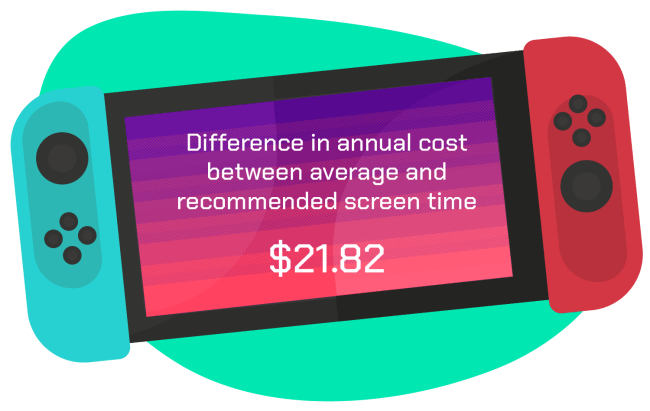The Burrow

The explosion of digital technology has become a parenting nightmare for families everywhere. Our children are growing up in a world that’s more connected, more wireless and more electronic than ever before.
In 2017, a poll by the Royal Children’s Hospital Melbourne found that children were spending an average of 4.6 hours per weekday and 4.5 hours per weekend day on devices with screens. That’s more than double the Department of Health’s recommended 2 hours per day. 1
As experts in energy comparison, Compare the Market have crunched the numbers, and this amount of screen time is costing families an average of more than $100 a year per child.*
* Based on children aged between 4 and 13 years old

Using data from the Growing Up in Australia longitudinal study conducted by the Australian Institute of Family Studies (AIFS), we can see the average amount of time children in different age groups spend using screens.
Averaging out the data from the AIFS and extrapolating it over a year, children aged between 4 and 13 years old spend on average 981.98 hours each year on screens. This screen-time includes watching television, using computers and playing on gaming consoles.
We also calculated the average cost of energy for children’s screen time and compared it to what the recommended 2 hours a day could cost.
Our findings: If parents reduced their children’s screen time to the recommended 2 hours a day, they could cut down the cost of screen time by 20%.



We asked Aussies aged 18 and up about their daily screen usage and found that on average, people spend 6.6 hours daily on screened devices. The average jumps up to 7.4 hours per day of screen usage for those aged 18-24 and 7.5 hours per day for those aged 25-34. This is just over two extra hours of screen time compared to those aged 65 and over.
Our survey also found that almost every second Aussie (47.8%) would be willing to cut down on their screen time to save on energy bills. This is quite similar to Canadian respondents where 46.7% of them would be willing to cut down on their screen time, whereas a slightly greater majority of American respondents (55.8%) were likely to make the cut.
There are a few things parents can do to try and lower the usage cost of TVs, computers and gaming consoles.
Likewise, streaming on a computer, playing a processing-heavy game or using hardware-intensive software (like graphic design or video editing programs) will use more power. For non-school related computer use, it may be prudent (for multiple reasons) to put a time limit on their screen time.

Using the data from the 2015 AIFS study, we calculated the average amount of screen time for television and computer/gaming console use for children aged 4 to 13 by adding weekday and weekend usage to get a total number of annual hours for screen time.
To calculate the cost of television use, we determined the hourly cost of the device by using a hypothetical 400-watt television and multiplied by 27.72 cents per kilowatt-hour (c/kWh), the average price of electricity in Australia for 2020-2021.2 Then we multiplied this hourly cost by the total annual average hourly figure of 700.09 hours based on the AIFS study.3 For this calculation, we arrived at a total average cost of $77.64 a year for television use alone.
The AIFS study combined the time spent on computer and gaming console use into the one figure. We applied the 27.72c/kWh cost to a 300-watt computer, PlayStation 5 and Xbox Series X, and then averaged these costs together to arrive at a single figure for console gaming and computer use. The PlayStation 5 and Xbox Series X also had the use of a 400-watt television factored in, as this is required to use the console. The total annual average number of hours spent gaming on consoles or using a computer was 281.89. The hourly cost was calculated by working out the cost of each device using the same method used for TV, and then averaging these different costs for consoles and computer use. This average hourly cost of gaming (accounting for computers and different consoles) was then calculated using the same method to arrive at an average cost of $37.77 a year.
The total average cost of screen time per year combined television use with computer/console gaming use to reach a total of $115.41 spent per year on energy to power a child’s screen time.
To calculate the recommended screen time use, we combined the hourly cost of a television, computer, Xbox Series X and PlayStation 5 to arrive at an average cost for all devices, based on the average electricity cost used earlier. Using an estimate of 2 hours per day and 365 days per year, we arrived at an average cost for recommended screen time of $93.59 per year.